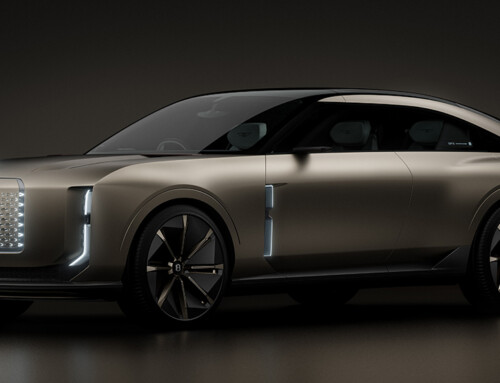The Mazda MX-5 is one of the 7 nominations for Car of the Year 2016. Here we should like to rerun Fabio Galvano’s interview with Ikuo Maeda (the Mazda design chief) on the occasion of the Paris Show in 2014, which covers the criteria underlying the design of the new car.

The new fourth generation Mazda MX-5 reflects the creative enthusiasm of Ikuo Maeda, today design director for the Japanese carmaker and, 25 years earlier, a member of the team working on the project for the first series. It was not an easy job, as the designers had to bring an icon among small roadsters up to date while not only retaining the appeal of its previous iterations, but also while keeping within the constraints of a platform also usable by Fiat for a spider it is developing in parallel with Mazda. “The new MX-5”, explains Maeda, “expresses our kodo design philosophy, or the soul of motion, which is in turn the contrast between immobility and movement embodied by an emotive, sexy form”.
The reflections from the bodywork change depending on the angle of the light striking it, giving life to the forms. “Starting from the nose, which is now lower than on the previous model”, says Maeda, “and continuing upward from the lights, the line reaches a peak at the front arch to then push back towards the tail and curve over the rear arch. It is a fluid movement, with the front and rear having the same curves, while beauty comes from the nose, which pushes downwards more than before, and from the superb proportions of the whole shape.”
1 cm lower than the outgoing model and 100 Kg lighter, thanks to the extensive use of aluminium, but also 10 cm shorter (3.91 metres) than the original MX-5, despite a more spacious cabin, the new Miata (as it is called for the American market) offers a lower seating position for the driver, who is placed directly in the centre of the steering wheel and instrumentation. “The important thing”, says Maeda, “was to put the driver in the best position possible. The view from the driver seat is perfect – the front fenders and, therefore, the position of the car on the road, can be seen clearly.”

Transforming an icon isn’t easy. “You cannot keep the value of the original”, admits Maeda, “by simply maintaining the same aesthetic image. You also have to assimilate its spirit, but while bringing it up to date and ensuring that the new version also achieves the same status as an icon representative of the brand. This was my job, which was made easier by a technological process which, for example, allowed me to find new solutions for the lights. The taillights, for example, are round and very sporty, and evocative of certain Italian sports cars. These will undoubtedly contribute to attracting younger customers.”












